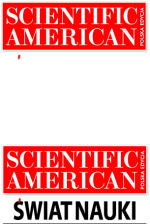 2006
2006
 2008
2008
 2010
2010
 2012
2012
 2014
2014



 |
Myriapods and their internal life
‘Ultrastructure of the midgut epithelium of Scolopendra cingulata (Myriapoda: Chilopoda), with special emphasis on the processes of its degeneration and regeneration’
Łukasz Chajec - – author of photograph,
|

|
Description popularizing the research project
Centipedes are perfect predators. They hunt at night. They move swiftly and nimbly on their numerous legs and attack in a blink of an eye. Their hard and sharp maxillipedes will hold firmly any prey. Even if it tries to escape, the venom used by centipedes during the attack will paralyse it. They devour almost the whole prey, leaving only the contents of digestive track of their prey, as they are not adapted to deal with vegetable fodder. On the contrary, their guts are typical for predators and they can digest only animal tissues. It is just one of very few facts, which we are certain about, in case of the digestive track of centipedes. Science knows surprisingly little about their other secrets. Quite a lot can be deduced by comparing them with other arthropods. Like in insects, their gut is not a simple empty inside tube to digest and absorb nutrients. It surely plays this role. Yet, apart from that, the gut, especially its middle part, is the immunological barrier protecting the animal against attacks of bacteria and other pathogens. Moreover, it is the storage of the neutralised toxins, which entered the body together with food. Unlike in insects the processes taking place in the gut and in its cells still hide many secrets. The unavoidable processes of apoptosis of cells damaged by pathogens or toxins remain unknown. It is not known how and how fast a layer of cells defending the body against external threat regenerates. Similarities with insects are not enough to find an answer to the questions. Centipedes – mysterious and little known nocturnal predators with their behaviour and many legs inspire anxiety. Knowing them inside out will not stop the thrills of fear but surely will allow disclosing yet another mystery guarded with venom and jaws.
Abstract
Myriapods, which are a very important component of soil fauna, play an important role in soil mineralization and in the decomposition of organic matter. In recent years, they also played a huge role in eco-toxicological studies because they are widely regarded as very good bio-indicators of environmental pollution. As in insects, in the gastrointestinal tract of myriapods, the midgut plays the most important function: it is the main organ of secretion of digestive enzymes and absorption of nutrients, as well as an organ of storage of various substances, including the toxic ones. Among many tissues and organs, the midgut epithelium is the first line of defense against toxic substances, and also plays a role in elimination of pathogens and unwanted or harmful substances accumulated in the food. Therefore, the analysis of any changes in the structure of the midgut epithelial cells at the ultrastructural level shows the influence of stressors on the entire body and shows occurring defense mechanisms. In the case of Myriapoda, over the last few decades there appeared some articles that were devoted only to the general morphology of its digestive system. However, the ultrastructural research on the midgut epithelium of this group of invertebrates is sporadic and there are numerous questions regarding the processes taking place within it. Compared to insects, in myriapods the mechanisms related to the processes of cell death (autophagy, apoptosis or necrosis) and regeneration, which all play a significant role in maintaining the homeostasis of cells and tissues of the midgut, are poorly understood. Previous scientific articles, whose subject was the myriapods midgut, concentrated mainly on issues relating to the impact of harmful substances such as heavy metals on the structure of epithelial cells. What is surprising is the fact that authors of those works described the influence of the substances on the ultra-structure of the midgut epithelium, yet none of these works contained an exhaustive description of its structure in the case of animals not poisoned with the substances. In addition, the authors of the studies reported the occurrence of regenerative cells within the midgut epithelium of myriapods, but they did not describe the processes of proliferation and differentiation of the cells. During our tests, a lot of research techniques were applied, among which the most important are light microscopy, transmission electron microscopy and fluorescence techniques.
Patronat honorowy
Leszek Jodliński
Dyrektor Muzeum Śląskiego w Katowicach
Zygmunt Łukaszczyk
Wojewoda Śląski
Jan Malicki
Biblioteka Śląska
Piotr Uszok
Prezydent Katowic
Adam Matusiewicz
Marszałek Województwa Śląskiego






 Apocrine secretion of digestive cells (Katowice, October 2010)
Apocrine secretion of digestive cells (Katowice, October 2010)







